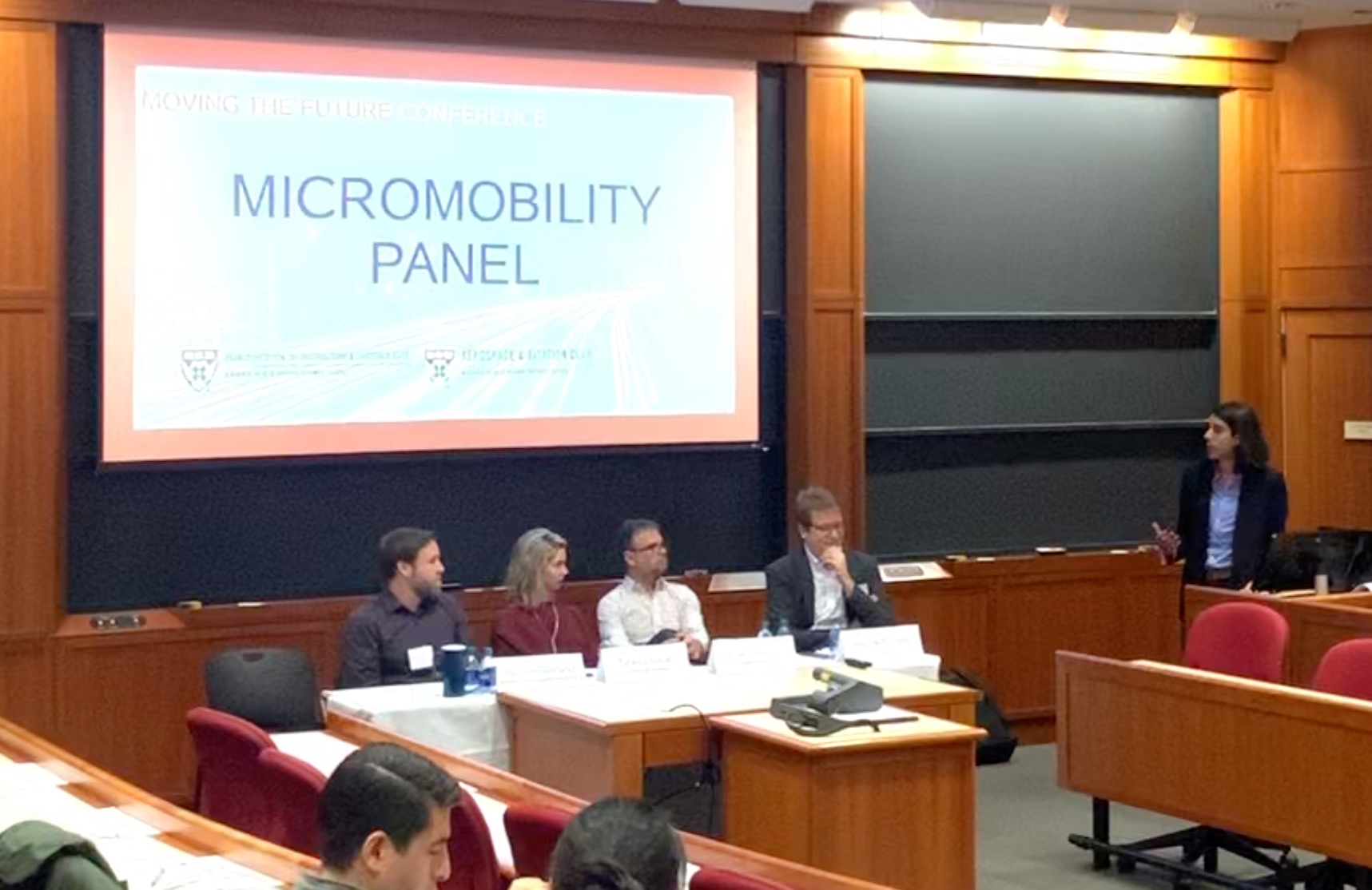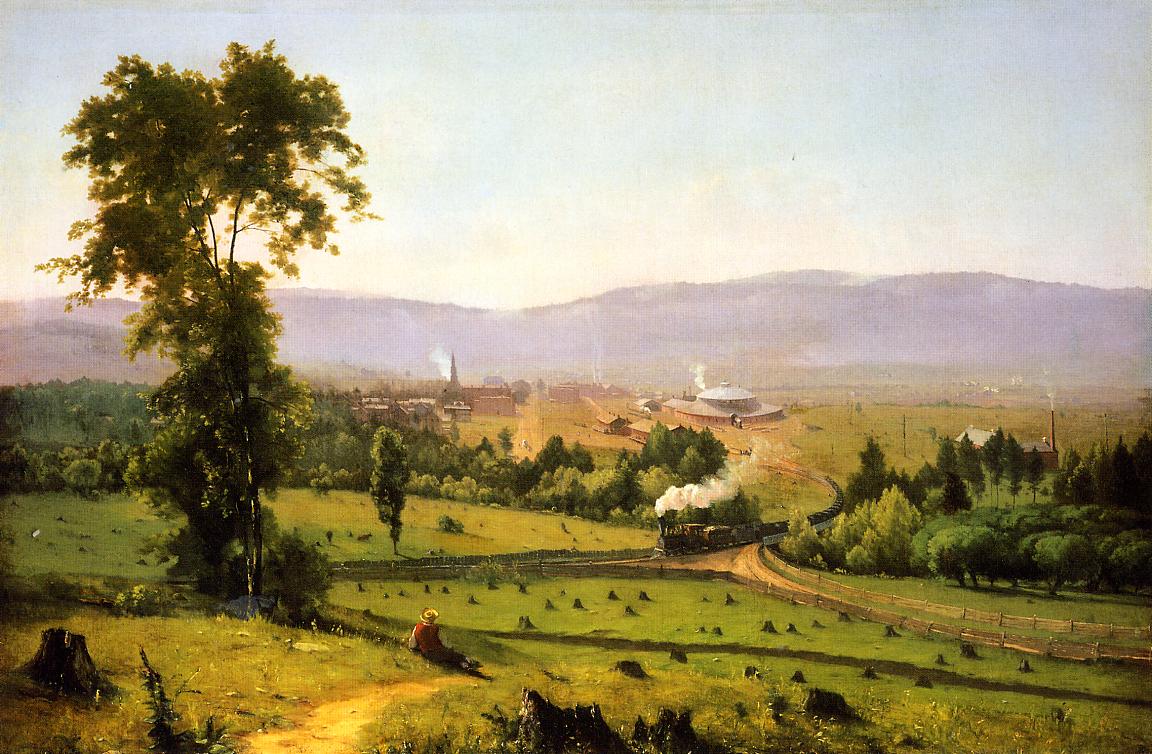Samuel Clay is a grad student in the schools of design and of engineering at Harvard. He founded NewsBlur, a personal RSS news reader, and Turn Touch, beautiful control for the smart home.
Talk to him @samuelclay.
I moderated a panel on micromobility at the annual Moving the Future Conference at Harvard Business School. I had the fortune of discussing this decade’s favorite topic with four heavyweights in the industry. We had the panel discussion on Groundhog Day, when Punxsutawney Phil saw no shadow and thereby predicted an early spring (ain’t that the truth),
We discussed the potential for micromobility, the cannibalization of walking and transit usage, aggregation of micromobility vehicles, and what the future of the vehicle looks like. Here’s all the good stuff and memorable lines from the 40 minute conversation.

The micromobility panel includes, in order from left to right:
The Machine in the Garden, written in 1964 by Leo Marx, explores the relationship between the pastoral ideal and the industrial progress that ostensibly is in opposition to that ideal. This book is not necessarily a literature review, although it enlists a half dozen full-length writings to understand the cultural symbols that encode the interplay between imagination and reality.

The urge to idealize a simple, rural environment is strong throughout the two centuries of progress that mark the industrialization of the United States from the American Revolution through until the end of World War II.
The literature that Marx introduces to illustrate the division between the two realms are masterworks that also serve as products of their times. Moby Dick by Herman Melville, Walden by Henry David Thoreau, The Tempest by William Shakespeare, Adventures of Huckleberry Finn by Mark Twain, and Ethan Brand by Nathaniel Hawthorne are instruments played in the concordant symphony of poetic realism that unites the two fronts.
At no point does Marx introduce the actual machines of the machine age to refine his point, instead preferring to rely on mid-Nineteenth century literature and art to capture the sensory images of the age.
Marx asserts that the authors of the 1800s addressed the alienation and environmental blight that accompanies that rapid industrialization that the building and deployment of the continental railroads brought with them.
The central question that Marx attempts to address is how come there is an attitude of hostility towards civilization? What is it about the products of industrialization, which bring us a miracle of goods and services that enrich our lives in innumerable ways, that provides us the impetus for abandoning them in order to reduce the technical complexity that has befallen us? What is attractive about the pastoralism that is represented by the untouched landscape, revered at Walden Pond, that is unspoiled and identified by nature as much as a rejection of the artificial world?

The romantic pastoral, a literary device embodied in the semi-primitivism of the cultivated landscape, is located chiefly by its opposition of the forces of civilization, the so-called fever of the world. It’s hard not to be taken by the opposing scene of the abstract when faced with the overwhelming force of a dehumanizing and polluting industry.
Continue reading The New Garden of the World — Review of The Machine in the Garden (1828 words)...
Back in 2014 I was driving up the 101 coming back from a YC alumni Demo Day and I had a lightbulb moment about the way I wanted to control my new Hue lightbulbs. That’s when the idea of Turn Touch was born. I’d had some experience building open source hardware projects for my home, and developing open source art installations for Burning Man at a slightly larger scale, but I had never thought I’d build an open source hardware project that would be commercially available (or at least available on Kickstarter). Turn Touch is now available to buy for $49 if you don’t feel like building your own.
There are four steps to building your very own Turn Touch:
Step one: Laying out the buttons and writing the firmware

Step two: Designing the remote to have perfect button clicks

Step three: CNC machining and fixturing to accurately cut wood

Step four: Inlaying the mother of pearl

Grove is a set of 10 interactive biofeedback sculptures, a conversation between humans and trees. Each tree is made of steel tubes, thousands of LEDs, and custom breathing sensors.
Grove is a 2016 honorarium installation at Burning Man and is the second installation made by the group that made Pulse & Bloom in 2014. The core team is ten people: Saba Ghole, Shilo Shiv Suleman, Severin Smith, Steve Lyon, Hunter Scott, David Wang, Francis Coelho, Naeemeh Alavi, Luke Iseman, and myself, Samuel Clay. Grove was conceptualized by the artist Shilo Shiv Suleman as part of her larger series exploring nature, intimacy and technology called Beloved.
Here’s how Grove works: you sit down at the base of a tree and a flower opens up in front of you as it senses your presence. As you breathe into a pink flower lit from inside, the tree fills up with your breath, rising white streams overtaking multiple slowly descending green lines. As you breathe, the tree shimmers with light as it becomes a nighttime desert oasis.
This post offers details on how this installation was built, from the custom circuit boards to the blooming flower and breathing sensors. You can access the complete source for Grove on GitHub.

Grove is made up of ten trees, each of which has its own breath sensor and set of two thousand LEDs across four 5 meter 144 LEDs/meter LED strips and 16 high current LEDs in the leaves. That takes both a lot of power to run and a lot of manpower to setup. This is what that setup looks like.

Since the trees light up with your breath, we need to consider how the breath is sensed and then how the thousands of LEDs are driven.
These are five stages to making the electronics work together: